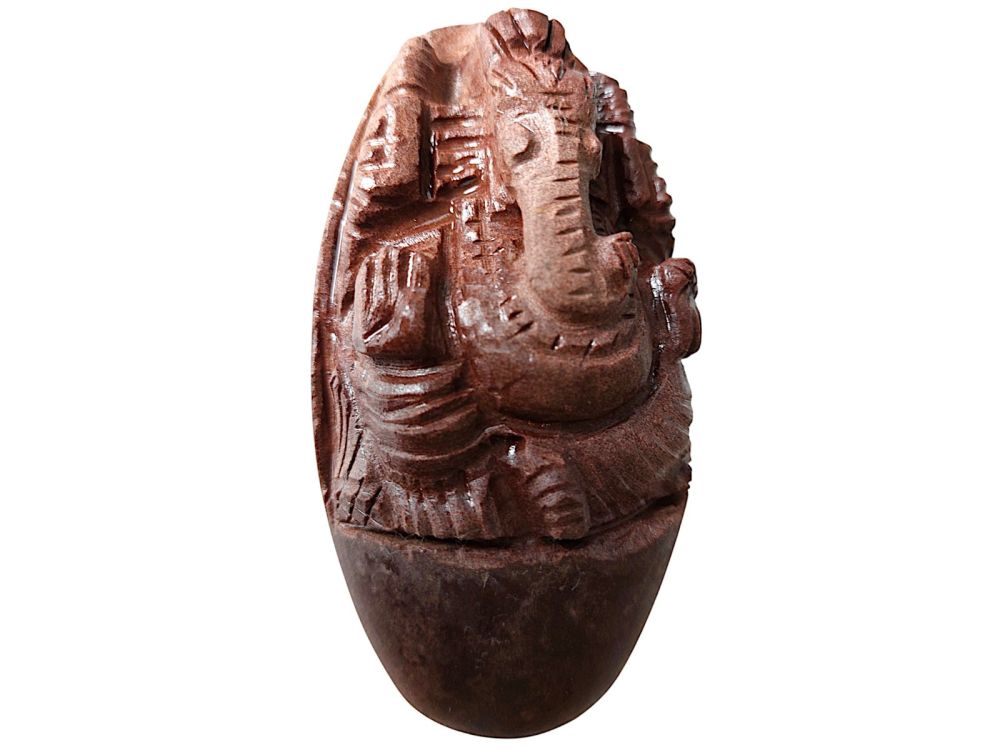We use cookies to make your experience better.
TimmersGems has a new website, existing customers also need to register again.
Lingam with engraved Ganesha in 12-15 cm.
The item features a hand-engraved image of Ganesha in a beautiful lingam. Made in South India.
Availability:
In stock
SKU
122388
A lingam (Sanskrit: लिङ्गं) is a phallic-shaped, elongated object in Hinduism, usually a small pillar or column, that represents the creative power of the god Shiva. Lingams are almost always made of stone. During a ritual, milk or water is poured over the lingam. They then place flowers on top. Many lingams have a yoni; this is a rim around the lingam in which the offered liquids are collected. The yoni then represents the feminine, while the lingam represents the masculine. Some lingams depict the face of Shiva. This is called an "ekamukha-lingam". A lingam with four faces is called a "chaturmukha-lingam.". These four faces, then, symbolise the four aspects of Shiva. In India, a number of naturally formed lingams can be found. A well-known example is an icicle that grows every winter in the Amarnath Cave in Kashmir. Thousands of pilgrims visit the cave every year. Before Shaivism (the cult that views Shiva as the most important deity) emerged, India may have already worshipped the lingam. Although lingams do not play a role in Buddhism, stupas built by Buddhists in caves have been left behind. Shaivists used these caves as lingams after the Buddhists abandoned them. This scenario is the case in a number of caves in the Indian state of Maharashtra. According to a legend, a saint named Bhrigu once had to wait too long for Shiva because he was making love to Parvati. After waiting for years, the saint finally pronounced a curse, which meant that Shiva would henceforth be worshipped as his own penis
| Dimensions | 120-150mm |
|---|---|
| Country of Manufacture | India |












